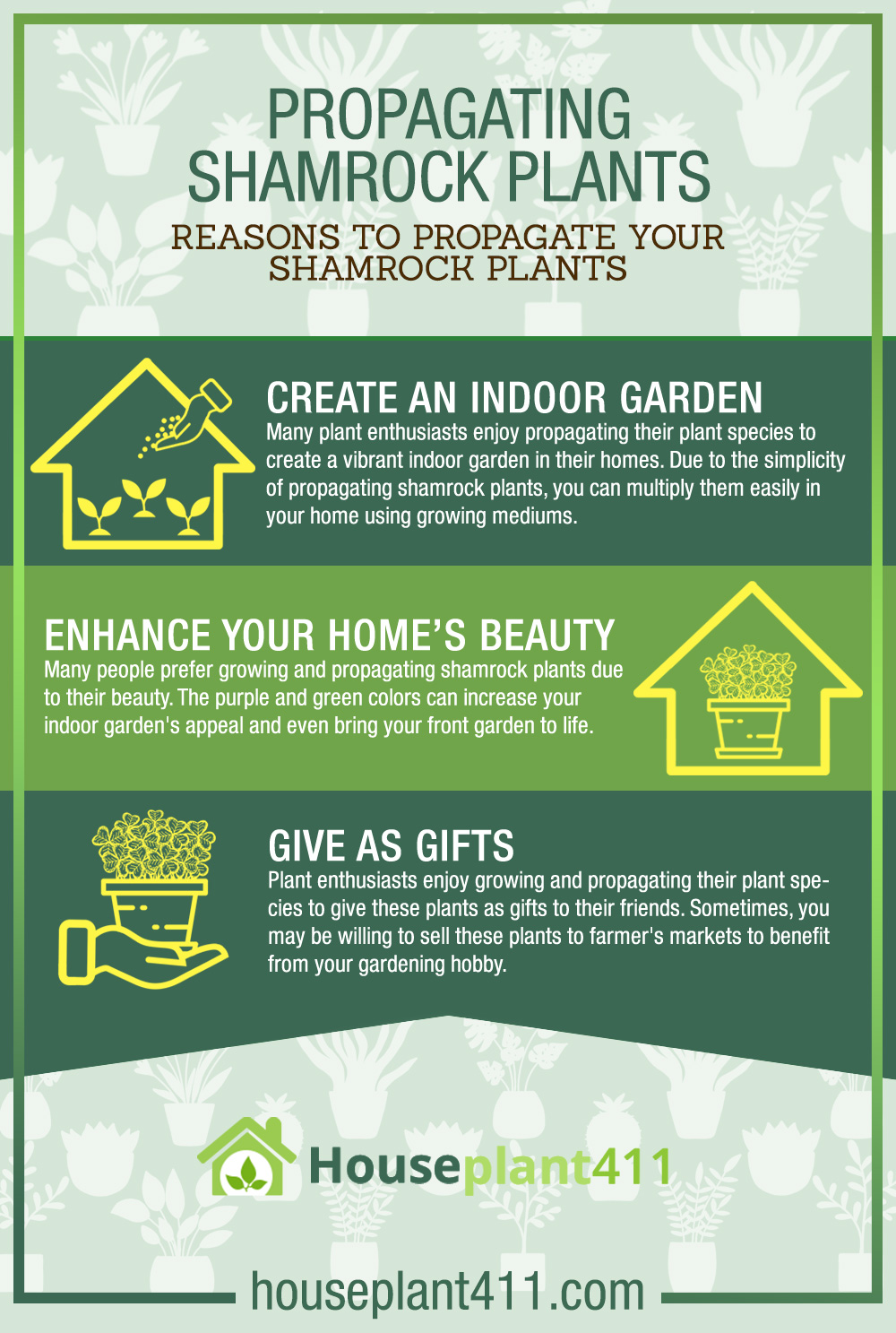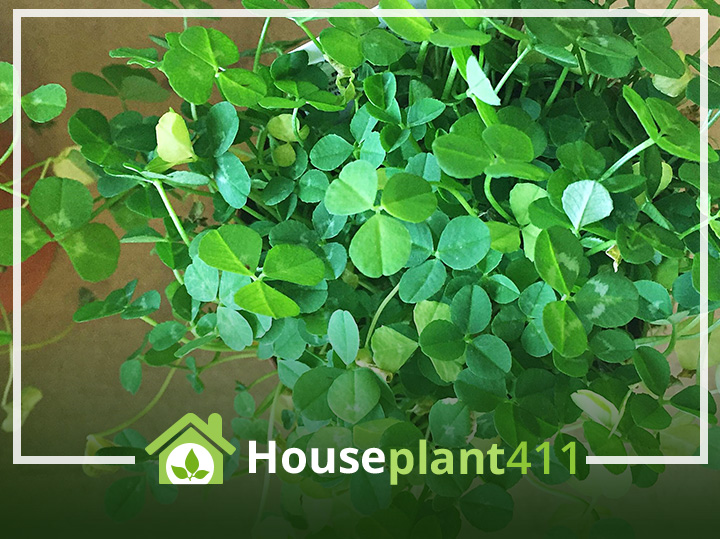Propagating shamrock plants is a fairly simple process. However, like with all plant varieties, you must know your plant species and what it responds to. Shamrock plants are an excellent choice for your home, and you can grow them indoors or in your garden. The weather and environment outside play a big part in growing them correctly, and propagation is possible by using a growing medium. These plants are becoming increasingly popular due to their purple colors and delicate pink flowers. These colors can enhance your home’s beauty.
Propagation of these plant species has made it possible for them to become more common than they used to be. You can expect to see shamrock plants in garden centers, retail settings, and farmers’ markets. If you’re thinking of propagating your shamrock plants instead of buying more for your home, you’ve stumbled upon the right article.
Let’s explore a step-by-step guide for propagating your shamrock plants and how to care for them in the right way.
Reasons to Propagate Your Shamrock Plants
Propagating your plants allows you to multiply them in your home. You can do this to enhance your home’s beauty if certain species are beautiful. Shamrock plants can be found in green, purple, and other colors, allowing you to grow the colors you like.
Let’s explore some reasons to propagate your shamrock plants.
Create an Indoor Garden
Many plant enthusiasts enjoy propagating their plant species to create a vibrant indoor garden in their homes. Due to the simplicity of propagating shamrock plants, you can multiply them easily in your home using growing mediums.
Enhance Your Home’s Beauty
Many people prefer growing and propagating shamrock plants due to their beauty. The purple and green colors can increase your indoor garden’s appeal and even bring your front garden to life. The vibrant colors are a sight to witness, and propagating your shamrock plants will impress your friends and family who visit your home.
Give as Gifts
Plant enthusiasts enjoy growing and propagating their plant species to give these plants as gifts to their friends. Sometimes, you may be willing to sell these plants to farmer’s markets to benefit from your gardening hobby. Shamrock plants are an excellent addition to any home; you can offer them as gifts to people you know.

How to Propagate Shamrock Plants
The propagation of shamrock plants is possible through two methods. These include growing them from seeds or using asexual reproduction to your advantage. You will find that the latter is the best propagation method as it provides the best results. Your parent plant can be divided and separately planted into a different container since each plant grows tiny plants through reproduction. Each plant has rhizomes, which can be found under your parent plant’s soil or potting mixture.
Let’s explore the steps to take to propagate your shamrock plant.
- Gently dig out your shamrock plant from its potted contained, making sure you do not damage the root system. The rhizomes will be visible, and you can identify them by their similarities to plant bulbs.
- If you see any growing medium on the rhizomes, you can remove them carefully. These are easy to remove since the rhizomes grow individually and are not joined with others.
- Select the best-growing medium for your plants and arrange some pots for growing your new plants.
- Choose the right soil mixture by selecting soil that drains well and does not retain excessive moisture. Once the soil is ready, plant the rhizomes directly into the soil while ensuring the pointy ends are facing up.
- Do not bury the rhizomes in the soil. Rather, plant them in the superficial layer of the soil while ensuring the tops remain slightly uncovered.
- Use your growing medium to coat the rhizomes and water them just enough to moisten the soil. Do not put too much water, as that could kill your baby plant.
Propagation Tips for Growing Your Shamrock Plants
Propagation involves waiting for your offspring plant to develop roots in the soil. Since this can take some time, it helps to facilitate a quick and efficient process. This is achieved by removing all the stems and leaves from the plant since new growth will occur quickly. You can expect to notice this growth within a few short days
Shamrock plants require adequate sunlight, but too much of it can cause your plant to die. However, your shamrock plants will grow most quickly in medium to sunny conditions. If you notice delayed leaf growth or stretchy stems, your shamrock plant is not receiving enough sunlight.
Watering requirements for shamrock plants are pretty straightforward. You should avoid drenching or soaking your offspring plant, which could lead to root rot. Instead, just enough water to keep the soil constantly moist will give you the best propagation results. Since you’re using a well-draining soil mixture, you can get away with watering your plant more frequently as long as you don’t go overboard. You should always wait until the water drains from the bottom of the container. Draining all the water prevents any chances of overwatering and allows you to meet your shamrock plant’s exact watering requirements.
You can also use a standard fertilizer with a ratio of 10:10:10 since that will meet your growing plant’s nutrient needs. Consider fertilizing your plant at the beginning of each month since it keeps the nutrients flowing.
One thing to keep in mind is that the shamrock plant becomes dormant every six months. This is normal and to be expected since many people confuse this period with their shamrock plant dying. You can reduce your watering frequency during this stage and cut off any dead leaves to facilitate new growth in your plant.
Dividing your shamrock plant in this way and growing it separately in a new container allows you to multiply your plant effortlessly. However, each plant is ready to be divided and propagated once yearly, sometimes twice.
Final Verdict
Propagating your shamrock plants is easy if you leverage their asexual reproduction. You can sell your plants to farmers or garden centers for some extra money or gift them to your friends after propagation. Since these plants are low maintenance and grow for many years, they are a fantastic choice for your home garden. Their beauty can enhance your home’s aesthetic appeal and allow you to learn more about propagation by following the steps laid out in this article.

